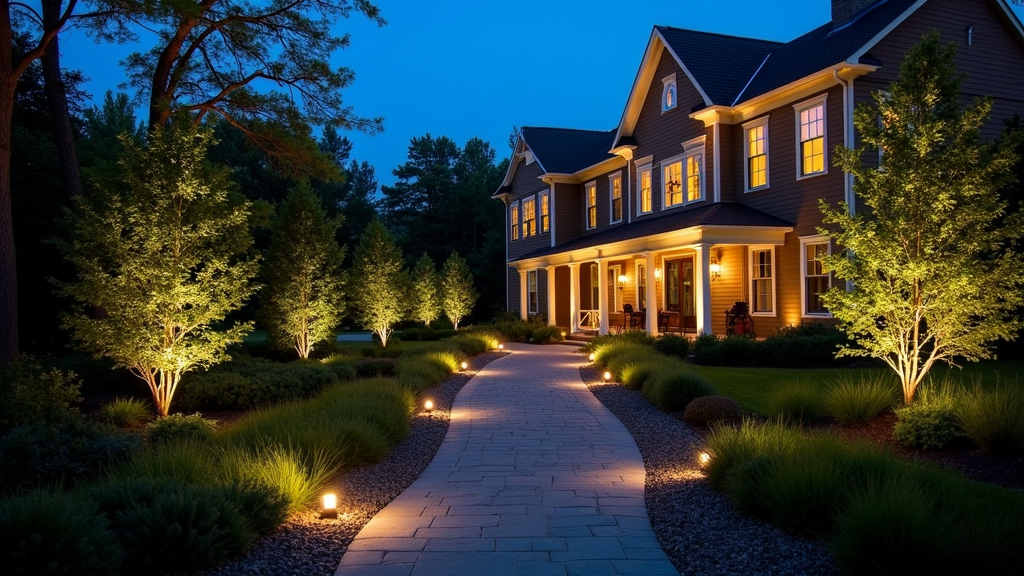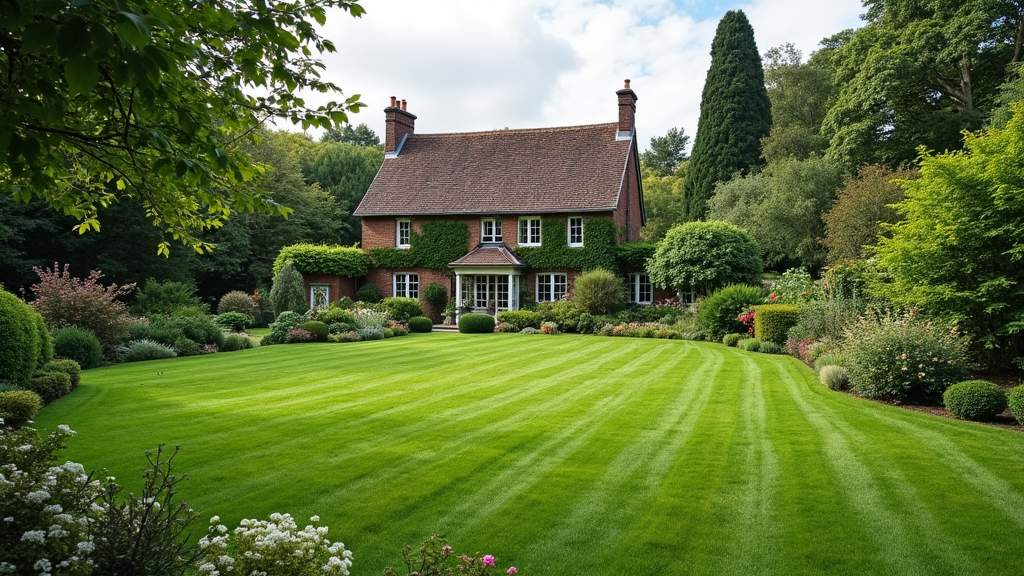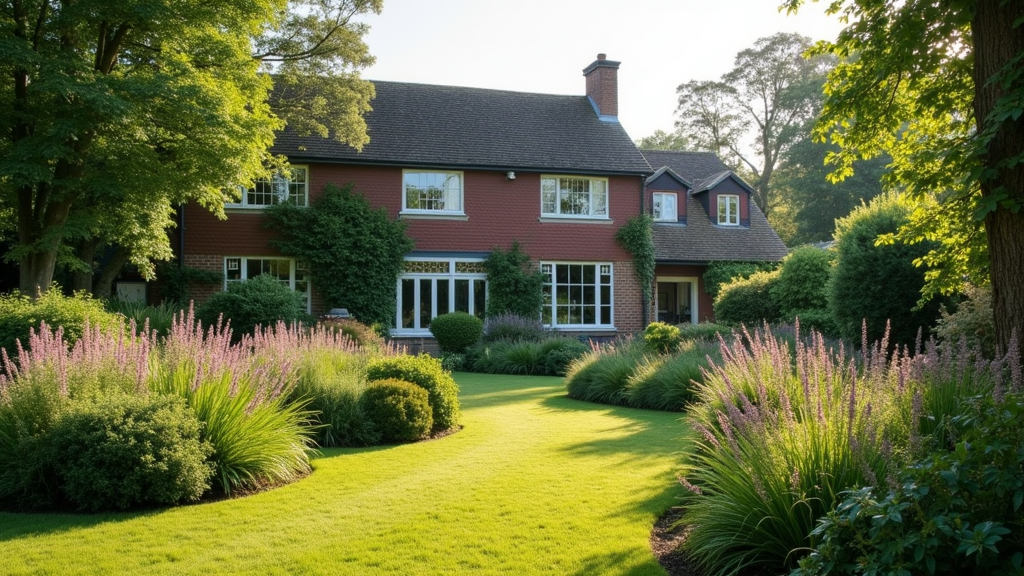Introduction: Why Native Plants Matter
When it comes to landscape design, North Carolina stands out with its diverse ecosystems and rich biodiversity. Choosing native plants not only enhances the beauty of your garden but also promotes ecological balance and sustainability. So, what exactly are native plants? They're species that have evolved in a particular region over thousands of years. By incorporating these plants into your landscape design, you can create a vibrant environment that requires less maintenance and supports local wildlife.
But why should you care about native plants in your landscape design? Well, for starters, they’re adapted to local soil and climate conditions, making them easier to grow. They also provide essential habitats for birds, bees, butterflies, and other beneficial creatures. Plus, using native flora can significantly reduce water usage and the need for chemical fertilizers or pesticides.
In this guide, we’ll delve into various native plants ideal for your North Carolina landscape design. We’ll explore their unique features, benefits, and how to incorporate them into your outdoor spaces creatively.
Understanding Landscape Design in North Carolina
What is Landscape Design?
Landscape design is more than just planting flowers; it’s an art form that combines horticulture with environmental science. It involves planning the layout of gardens, yards, parks, and other outdoor areas to create beautiful yet functional spaces.
https://privatebin.net/?bdde89530f2782a3#5hztYX9YANp5xQqmCF9u492zuf9TfhtmpYU1ngJb2RsvWhy Focus on Native Plants in Landscape Design?
Easy Maintenance: Native plants require less watering and care compared to exotic varieties. Biodiversity: They help maintain local ecosystems by supporting pollinators and wildlife. Soil Health: Many native plants enrich the soil with nutrients essential for a thriving garden. Aesthetic Appeal: Native flora offers unique beauty that reflects the state's natural landscapes.Key Elements of Landscape Design North Carolina
- Climate Considerations: Understanding the hardiness zones is crucial for plant selection. Soil Types: Different regions have different soil compositions; knowing yours helps in selecting suitable plants. Sunlight Availability: Assessing sunlight exposure can determine which plants will thrive in specific areas of your yard.
Native Plants to Incorporate in Your North Carolina Landscape Design
1. Eastern Redbud (Cercis canadensis)
The Eastern Redbud is a stunning small tree known for its striking pink flowers that bloom early spring before the leaves appear. It's perfect for understory planting or as a focal point in any garden.

Benefits
- Attracts pollinators like bees. Provides excellent fall color with yellow foliage. Adaptable to various soil types.
How to Incorporate
Plant Eastern Redbuds near patios or walkways where their beauty can be appreciated up close.
2. Black-eyed Susan (Rudbeckia hirta)
This cheerful flower brings vibrant yellow splashes to any garden setting. Black-eyed Susans bloom from summer through fall and attract butterflies like magnets!
Benefits
- Drought-resistant once established. Low-maintenance perennial. Excellent cut flower option.
How to Incorporate
Use them in mass plantings along borders or as part of wildflower meadows.
3. Cardinal Flower (Lobelia cardinalis)
With its brilliant red spikes blooming during the summer months, the Cardinal Flower adds an eye-catching touch near water features or moist areas.
Benefits
- Attracts hummingbirds. Thrives in wet soil conditions.
How to Incorporate
Plant them along streams or ponds where moisture levels are consistently high.
4. Purple Coneflower (Echinacea purpurea)
Another standout flower is the Purple Coneflower, well-known for its daisy-like appearance and medicinal properties.
Benefits
- Attracts pollinators like butterflies and bees. Can be used for herbal teas and remedies.
How to Incorporate
Mix them into perennial beds or use them as colorful accents throughout your landscape design.
5. Southern Magnolia (Magnolia grandiflora)
The Southern Magnolia is an iconic tree providing immense shade alongside fragrant white flowers during late spring through summer.
Benefits
- Evergreen foliage provides year-round interest. Great for privacy screens due to its size.
How to Incorporate
Position Southern Magnolias as standalone specimens or along property lines for added privacy.
6. Wild Blue Indigo (Baptisia australis)
This perennial boasts beautiful blue flowers resembling sweet pea blossoms during late spring.

Benefits
- Helps fix nitrogen back into the soil. Drought-tolerant once established.
How to Incorporate
Use Wild Blue Indigo as part of mixed perennial borders or naturalistic gardens where its height can shine among shorter species.
Creating a Sustainable Landscape with Native Plants
Importance of Sustainability in Landscaping
As environmental concerns grow globally, sustainable landscaping practices become increasingly vital. Integrating native plants into your landscape design contributes significantly by minimizing resource consumption while enhancing ecological health.
Water Conservation Strategies
One primary advantage of using native plants is their ability to thrive on rainfall alone after establishment:

Best Practices When Designing Your Landscape with Native Plants
1. Planning Your Space Effectively
Before diving into planting:
- Assess sunlight exposure throughout the day Identify drainage patterns across your property Sketch out zones based on function—entertaining areas vs relaxation spots
2. Grouping Plants by Needs
Organize groups according to:
- Water requirements Light preferences Soil conditions
This reduces competition among species while ensuring optimal growth!
Maximizing Aesthetics with Color Combinations
Color plays an essential role when designing landscapes:
Pair warm colors (yellows/oranges) against cool tones (blues/pinks) Create layers through height variations—taller species at the back & shorter upfrontThis strategy creates visual interest while promoting biodiversity!
Maintaining Your Native Plant Garden Throughout Seasons
Once established:
- Monitor growth patterns annually Prune as needed during dormancy Apply organic mulch regularly
These steps ensure longevity while keeping maintenance minimal!
Enhancing Wildlife Habitat Through Thoughtful Design Choices
Native landscapes can serve as critical habitats:
1) Include nectar-rich flowers attracting pollinators 2) Provide shelter via dense shrubs/trees 3) Leave some areas unmanaged allowing natural succession
Such practices foster healthy ecosystems benefiting everything from insects up through larger fauna!
FAQs About Native Plants in North Carolina Landscapes
1) What are some low-maintenance native plants? Low-maintenance options include Eastern Redbud and Black-eyed Susan which require less watering once established!
2) Can I mix non-native species with natives? Yes! However ensure they don’t dominate—focus primarily on natives first then add selectively based on compatibility!
3) How do I choose between different types of native grasses? Consider their height preferences & habitat needs—some thrive better under certain light conditions than others!
4) Is it expensive to switch my current landscaping over? Initial costs may vary depending upon plant selections; however long-term savings arise from reduced irrigation/fertilizer needs!
5) When's best time plant natives? Spring & Fall are ideal since temperatures remain mild allowing roots establish before extremes hit summer/winter seasons respectively!
6) Are there any grants available for creating sustainable landscapes? Yes! Various organizations offer funding opportunities aimed at promoting sustainability within community projects—check local government websites!
Conclusion: Start Your Journey Towards a Beautifully Sustainable Landscape!
Choosing native plants for your North Carolina landscape design is not just an aesthetic choice but also a commitment towards preserving our environment's integrity! From enhancing biodiversity support systems right down improving overall ecosystem health—the benefits are endless!
By following best practices highlighted here—from planning effectively grouping strategically—you'll set yourself up successfully! Remember—it doesn’t take much effort transform ordinary yards extraordinary havens nature! Embrace this journey today; let Mother Nature lead way towards stunning outdoor spaces filled vibrant life!